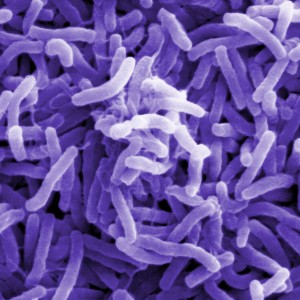Genetic characterization of non-O1/non-O139 Vibrio cholerae mobilome: a strategy for understanding and discriminating emerging environmental bacterial strains

Accepted: June 14, 2023
All claims expressed in this article are solely those of the authors and do not necessarily represent those of their affiliated organizations, or those of the publisher, the editors and the reviewers. Any product that may be evaluated in this article or claim that may be made by its manufacturer is not guaranteed or endorsed by the publisher.
Authors
Acute diarrhea and cholera (AWD/C) result in more than 21000 to 143000 global mortality annually and are associated with Vibrio cholerae. The pathogen has shown increasing evolutionary/emerging dynamics linked with mobilome or ubiquitous nature of mobile integrative genetic and conjugative elements (MIGCE), however, such dynamics are rarely reported amongst somatic-antigen non-agglutinating Type-1/-139 V. cholerae (SA-NAG-T-1/139Vc). The study reports the genetic detection of mobilome-associated indices in SA-NAG-T-1/139Vc as a potential strategy for differentiating/discriminating emerging environmental bacteria. Presumptive V. cholerae isolates were retrieved from five water sources, while strains were characterized/serogrouped and confirmed using simplex and comparative-genomic-multiplex Polymerase Chain Reaction (PCR). Genomic island (GI-12det, GI-14det, GI-15det); Phages (TLC-phagedet, Kappa-phagedet) and ICEs of the SXT/R391 family genes (SXT/R391-ICEs integrase, SXT-Hotspot-IV, ICEVchInd5Hotspot-IV, ICEVchMoz10Hotspot-IV) were detected. Other rare ICE members such as the ICEVcBan8att gene and Vibrio Seventh Pandemic island detection (VSP-II Integrase, Prototypical VSP-II) were also detected. Results revealed that the 8.22% (61/742) SA-NAG-T-1/139Vc serogroup observed harbors the Vibrio Seventh Pandemic island integrase (34/61; 55.7%) and other rare genetic traits including; attB/attP (29/61; 47.5%, 14/61; 23%), integrative genetic elements (4/61; 6.56%), phage types (TLC-phagedet: 2/61; 3.28% and Kappa-phagedet: 7/61; 11.48%) as well as the integrase genes (INT1, Sul1, Sul2) (29/61: 47.5%; 21/61: 34.4%; 25/61: 41%). Such genetic detection of mobilome determinants/MIGCE suggests potential discriminatory tendencies amongst SA-NAG-T-1/139Vcwhich may be applied in mobilome typing of evolving/emerging environmental bacteria. The need to encourage the application of such mobilome typing indices and continuous study of these strains is suggestive of interest in controlling future potential emerging environmental strains.
How to Cite

This work is licensed under a Creative Commons Attribution-NonCommercial 4.0 International License.
PAGEPress has chosen to apply the Creative Commons Attribution NonCommercial 4.0 International License (CC BY-NC 4.0) to all manuscripts to be published.

 https://doi.org/10.4081/jbr.2023.11202
https://doi.org/10.4081/jbr.2023.11202



